The following post examines residential internet connections in Southeastern Michigan. We show the number of high speed internet connections per 1,000 households, as well as the number of providers across the region. The number of providers is not necessarily correlated with the number of households with high-speed internet. The exception to this is in the City of Detroit, where, the number of households with internet connections and the number of providers are both low in most Census tracts.
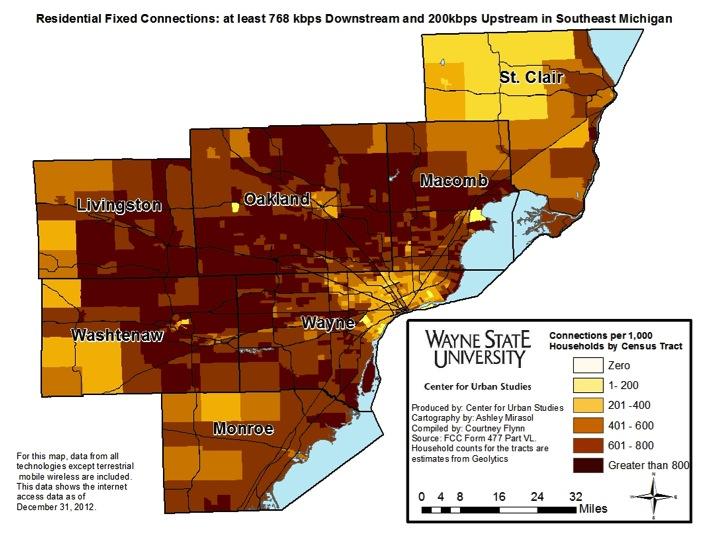
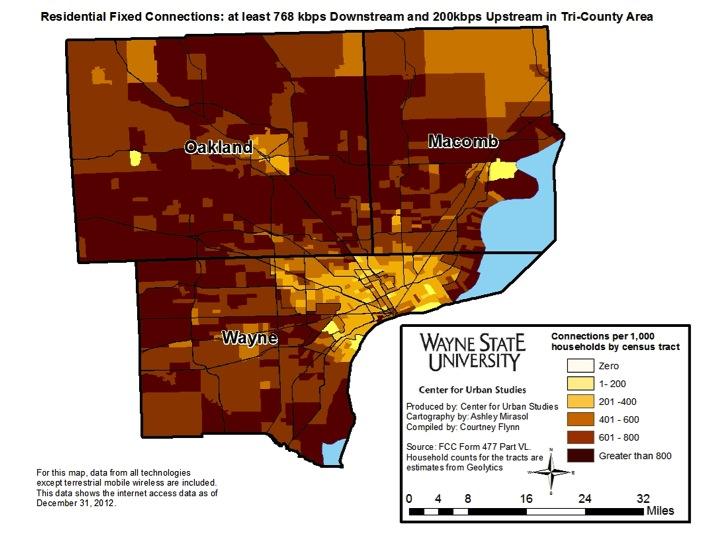
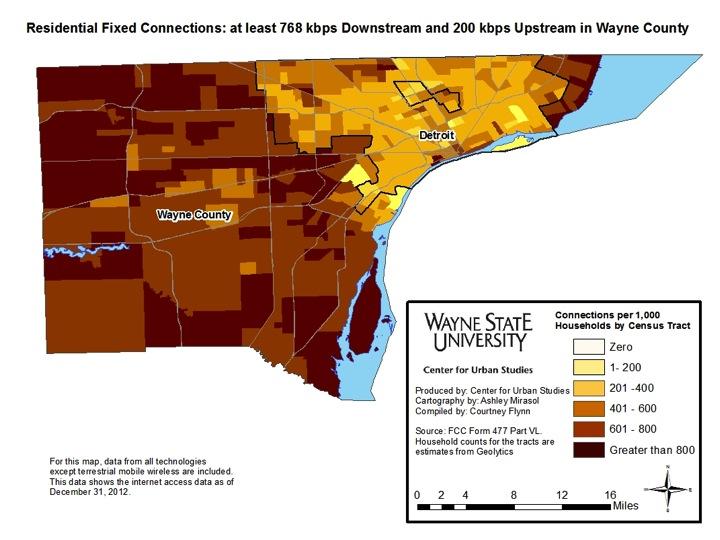
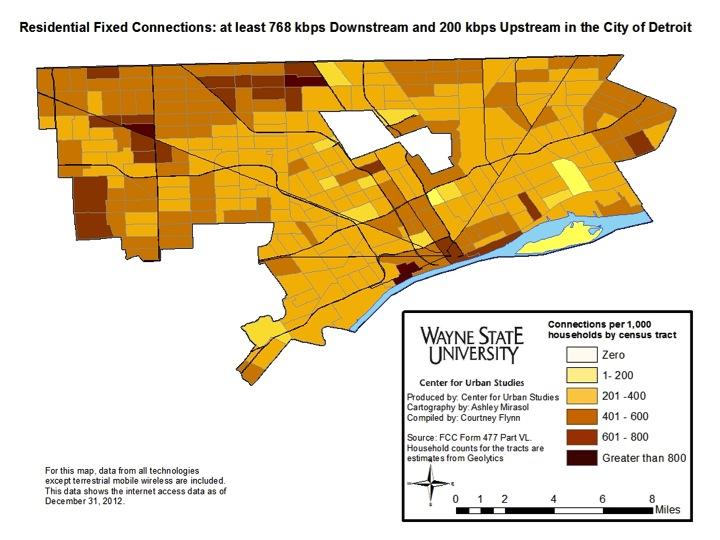
The above four maps show the residential internet connections per 1,000 residents in Southeastern Michigan. Overall, majority of the Census tracts in the region have 200 households or more per 1,000 residences with a high bandwidth connection. As can be seen when examining all four maps, there are only five Census tracts in the region where the number of bandwidth connections per 1,000 residences is 200 or less. Three of the Census tracts are located in Detroit and then one each is located in Macomb and Oakland counties. Oakland County has the largest number of Census where there are greater than 800 connections per 1,000 households. Overall, the number of connections per 1,000 households in the City of Detroit mirrors those in the rural areas of St. Clair County.
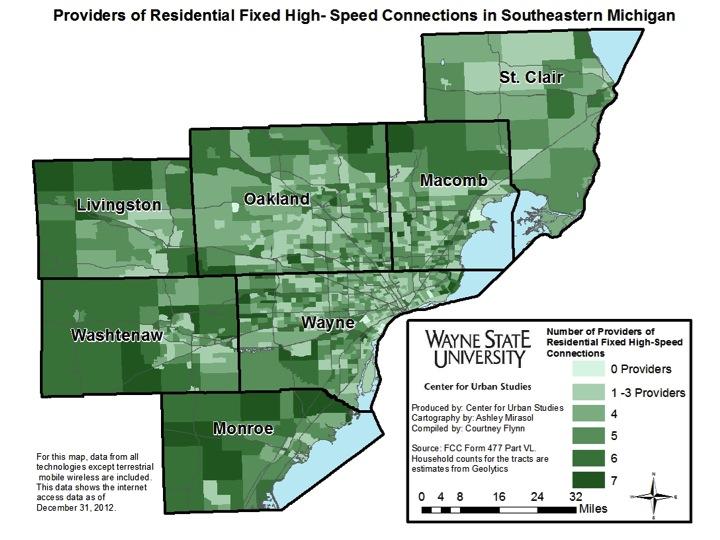
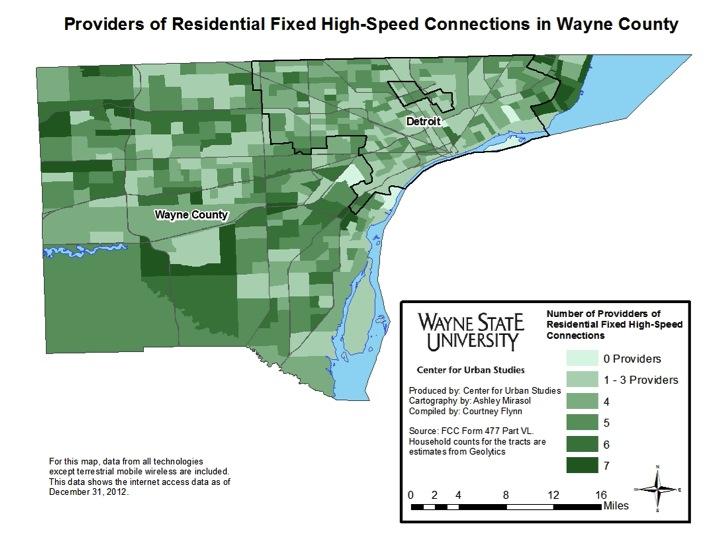
The above two maps show the number of residential high speed internet providers in each Census tract in the region. In the rural region of St. Clair County and the inner core of the Wayne-Macomb-Oakland area, there are fewer providers, approximately four or less. There are generally more providers in the outer areas of the region. For example, on the west sides of Livingston, Monroe and Washtenaw counties there are 6 or 7 providers. In some of these areas, particularly the far west areas of Livingston and Washtenaw counties, there are less than 400 connections per 1,000 households. Overall, the data shows that there are fewer providers where bandwidth connections are low. This is seen both in the rural areas of Southeastern Michigan and the City of Detroit.